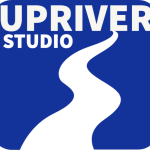NDI Tools with VLC and vMix to Capture Video from Non-NDI Cameras – YouTube
“Using vMix and NDI with VLC to Capture Video from Older Non-NDI Cameras” https://www.ndi.tv/tools/ If you have an older camera that is not NDI-compatible, you can still use it in your live video production setup with vMix and VLC. To do this, you would need to connect the camera to a capture card that is compatible with vMix and then connect the capture card to your computer running vMix.
In vMix, you can then add the input from the capture card as a video source and use it in your production just like any other video source. As for VLC, you can still use it to play the video from your older camera, but you would need to first capture the video from the camera and then encode it into a format that can be played by VLC.
This can be done using a separate software or hardware encoder, depending on your setup. Once the video is encoded, you can then play it back in VLC for monitoring or as part of your overall production. vMix and NDI are both technologies used in live video production. vMix is a software-based video mixer and switcher that allows you to create live video productions using multiple cameras, video files, audio and more. NDI, on the other hand, is a royalty-free technology that allows video and audio sources to be shared across a network, making it easier to use those sources in live video production.
VLC is a popular, free, and open-source media player that can also play NDI streams. VLC can play NDI streams by using the NDI library for VLC, which can be installed as a plugin for the VLC media player.
So, if you have vMix and NDI, you can use VLC to play NDI streams from vMix or other NDI sources, giving you more flexibility and options for playing and using NDI streams in your live video productions.











